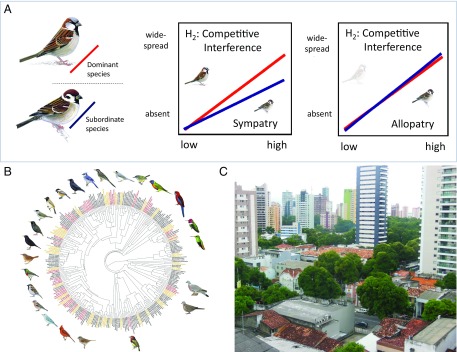Fig. 1.
Understanding interspecific dominance competition in urban landscapes. (A) Competitive interference hypothesis of Martin and Bonier (4) posits that behaviorally dominant species (e.g., the house sparrow, Passer domesticus) will suppress the abundance of, or entirely exclude, cooccurring subordinate species (e.g., the tree sparrow, Passer montanus) in sympatry that might otherwise thrive in cities. Adapted with permission from ref. 4; sparrow images courtesy of RSPB Images. (B) Species pairs included in the study represent a broad swathe of the avian tree of life. Adapted with permission from ref. 4. (C) Belém, Brazil, is an example of a city in a developing country that still retains wildlife habitat, potentially facilitating species coexistence.

